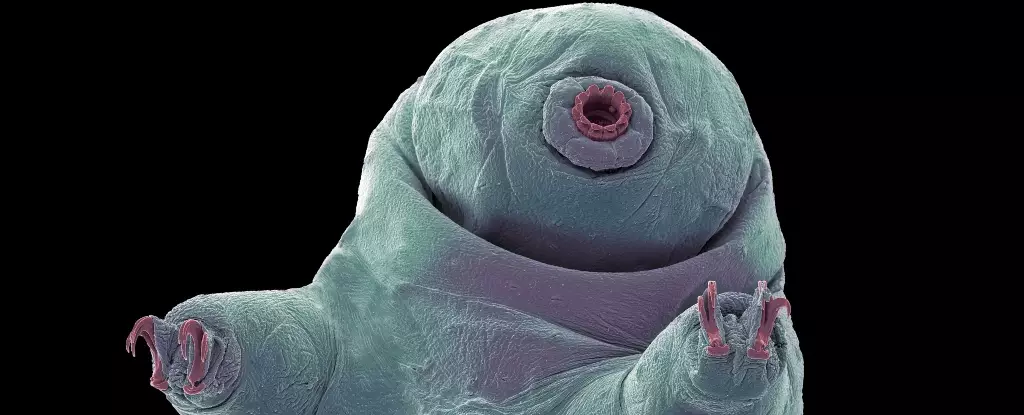From March 10 to 14, 2025, scientists and space enthusiasts gathered in The Woodlands, Texas, for the Lunar and Planetary Science Conference. This event was not just another scientific gathering; it was a vibrant platform for visionary ideas and innovative research aimed at tackling one of the most pressing questions in space exploration: How can humanity thrive beyond Earth? Among numerous pioneering missions and concepts, the highlight revolved around the capability of tardigrades—those seemingly indestructible microscopic organisms—to inform future endeavors in human space survival and adaptation.
The Marvels of Tardigrades: Nature’s Extremophiles
Tardigrades, often whimsically referred to as “water bears,” have astonished scientists with their extraordinary ability to endure extreme conditions. Ranging from the near absolute zero to scorching temperatures far exceeding boiling points, these minute creatures not only survive but thrive under circumstances that would obliterate most known life forms. This incredible resilience makes them a focal point for astrobiological studies, particularly concerning life’s potential habitat in hostile extraterrestrial environments like Mars or the icy moons of Europa and Titan.
The collaborative research conducted by NASA ambassador Isadora Arantes and Associate Professor Geancarlo Zanatta from Brazil’s Federal University of Rio Grande do Sul unveiled crucial insights into the genetic fortitude of tardigrades. Notably, these studies centered around proteins such as Dsup (Damage Suppressor), which plays a pivotal role in maintaining DNA integrity amidst the bombardment of radiation and other stressors. The findings indicated that by utilizing modeling tools like Gromacs software, researchers could simulate the molecular dynamics of these protective proteins, thereby unveiling their finesse in preventing genetic damage.
Dsup: The Protein that Shields Life
The significance of Dsup transcends mere curiosity; it prompts a paradigm shift in our understanding of biology and the potential for life beyond Earth. What emerges from the study is not only crucial information about tardigrades but also profound implications for enhancing human resilience in space. The ability of Dsup to shield genetic material from radiation-induced damage stands as a testament to the evolutionary innovations that have occurred over millennia. This adaptation could provide a framework for engineering human cells to become more resilient, a necessity as we inch closer to long-duration space missions.
Moreover, the researchers noted the importance of heat shock proteins (HSPs) and antioxidant enzymes, crucial for maintaining cellular stability under extreme stress. These findings hint at the potential for biotechnological advancements that could lead to more robust crops and adaptive human cells designed to withstand the rigors of space travel or even the harsh climates found here on Earth.
Lifesaving Applications Beyond Astrobiology
Arantes and Zanatta expounded upon the broader significance of their research, emphasizing that learning from tardigrades could enhance agricultural resilience against climate change. As global challenges mount, understanding how these extremophiles adapt may allow researchers to create crops capable of surviving in arid, high-radiation environments or excessive flooding. This interconnectedness between astrobiology and terrestrial applications sheds light on a monumental truth: pondering life beyond our planet could yield incredible benefits for life on our own.
Moreover, the researchers stressed the necessity for integrated approaches that blend computational methods with practical experiments. This comprehensive strategy will not only refine our understanding of how life endures but also pioneer innovative solutions to pressing issues on Earth. As the scientific community continues to probe the complexities of life in extreme environments, it invites further exploration into the mechanisms that define resilience.
A Vision for the Future of Humanity in Space
The excitement surrounding the findings presented at the 2025 Lunar and Planetary Science Conference is not simply academic; it is a beacon illuminating the path for future human exploration of space. By understanding and applying the lessons learned from tardigrades, we may pave the way for sustainable human existence in the cosmos, transforming the dream of interplanetary life into a tangible reality. The research beckons us to look beyond the stars and consider the potential for human resilience through the wisdom embedded in nature’s most extreme survivors. As we set our sights higher, the dialogue between astrobiology and biotechnology could redefine what it means to survive in the universe, making the vast expanse of space a new frontier for life.


Leave a Reply